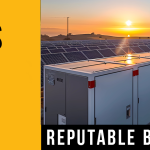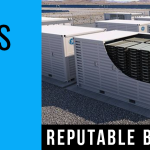 Scientists at the University of California, Irvine; the California Institute of Technology; and the Carnegie Institution for Science have released an analysis of the U.S. electricity grid managing expanding volumes of intermittent generation in the research journal Energy & Environmental Science.
Scientists at the University of California, Irvine; the California Institute of Technology; and the Carnegie Institution for Science have released an analysis of the U.S. electricity grid managing expanding volumes of intermittent generation in the research journal Energy & Environmental Science.
Geophysical constraints on the reliability of solar and wind power in the United States posits that the U.S. electrical grid could be 80% powered by a solar-heavy+wind power combination using just 12 hours of energy storage to smooth out the variability.
The paper also shows that a wind-heavy+solar power electricity grid would require a nationwide high voltage DC (HVDC) network to move electricity from wind energy dense mid-western regions toward the coasts. The solar heavy network wouldn’t need energy storage with an HVDC network.
To reach a 100% wind+solar U.S. electricity grid would require 3 weeks of energy storage. According to lead author Dr. Matthew R. Shaner.
The U.S. currently uses about 3,900,000 terawatt-hours (TWh) per year. A 12 hour chunk of that would be about 5.4 TWh. At a cost of $350 per kilowatt-hour (kWh), that would cost $1.9 trillion. If each of the 110 million single family homes in the U.S. were to install an energy storage system, and split the total volume needed with the electricity utilities, we’d need approximately 24kWh/home.
About equal to a couple of Powerwalls, a little larger than a Sonnen or 1/2 of a Model 3.
Supplemental information was included with the abstract at the journal website. In it were visualizations of various models, some examples below. The models were mixtures of solar, wind, over sizing these two resources and energy storage. One model, with 100% solar plus 50% over capacity paired with 12 hours of energy storage got us to 93% reliability.





